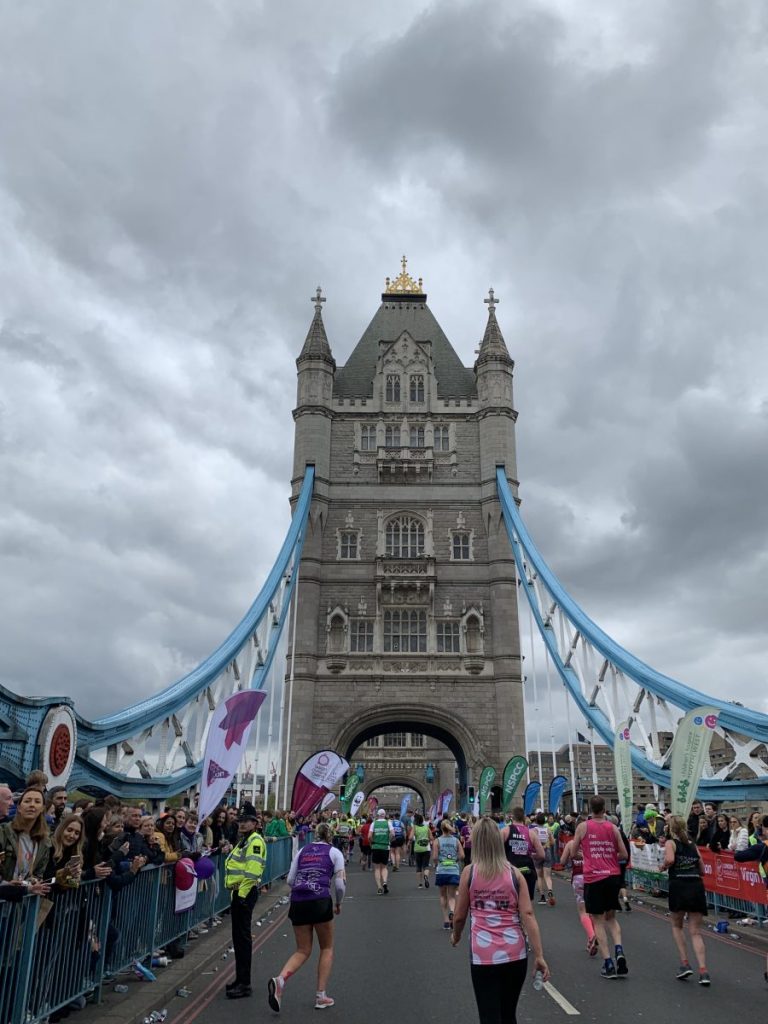Last Sunday, the most popular public running event in the world happened: the London Marathon. Partly as a joke, I had applied for a spot to run — as I do every year — thinking I wouldn’t get it because of the tens of thousands who enter the drawing to take part. But clearly, the Ballot Gods decided to troll me this time.
I had only one aspiration: to train and become strong enough to run with no guarantee of actually making it to the starting line. I wanted to prove to myself that I own my body. Life with a chronic illness is a daily battle to regain control. Not to win, not to be cured, but to live fully, despite the illness. I wanted to tell my endometriosis who’s the boss.
I trained for months, in ridiculously freezing temperatures in Brooklyn, New York, and running up and down the challenging, hilly terrain of East Sussex, England. Twice I had to take weeks off my training because of endometriosis symptoms. Two weeks before the race, my ovaries refused to read the memo about my running. The sharp, tugging pains that sometimes leave me bedbound slowly reappeared — at first very gently, as if asking, “Girl, what are you trying to do?!” Then, four days before the marathon, I suffered a huge flare-up. I had to cave in, forget my training and rest.
On the day of the marathon, I woke up and my body seemed to be OK with going for a 26-mile run.
At 7 a.m., I headed into London with my support crew, including Jarvis, my wiener dog with no tail, and buckets of attitude. It was a cold morning at the starting line, and I was eager to get going. Once I did, everything seemed normal for the first mile, until a sharp pain I’ve never felt before began to emanate from my left inner thigh. A half-mile later, IBS-like symptoms appeared. I felt heavy and sore, but I just focused on the atmosphere: thousands of people calling my name, high-fiving me, feeding me sweets (that’s candy for my lovely U.S. readers), and powering me through the streets of London.

The city was imbued with an uplifting atmosphere, including live music, family gatherings, and impromptu street parties. My favorite homemade banners included “Tap to power up” and the best examples of British humor, such as, “You make Brexit look fast.” I’ve never been called a hero so loudly, never felt this much support. I’ve also never laughed so much while running. I heard “Go Jess” and “Run Jess, you’ve got this” endlessly. I will never be able to thank the amazing people of London.
Running across Tower Bridge gave me wings, I couldn’t stop smiling. From mile 13, it all became a hundred times harder and more painful, but also increasingly exciting. I kept telling myself: “I’m going to do this.”
I crossed the line with Beyonce’s “Schoolin’ Life” in my earbuds and raised my fists in the air, 5 hours and 44 minutes after the start. I cried like a baby collecting my medal.

Running a marathon is not for everyone.
I don’t even think it’s for me! I’m OK with running a half, but as soon as I am on my legs for more than two hours, I am ready to go home and do something different. Also, 48 hours after the marathon, I am moving around like a toddler who just learned to walk.
I ran a marathon, but for people with a chronic illness, a marathon is also getting a diagnosis, or spending weeks recovering from surgery. Living with endometriosis is about showing up daily, trying to squeeze everything out of our lives, despite the illness.
I wanted to show my body who’s boss, and I did. I just need to remember that feeling every day.
***
Note: Endometriosis News is strictly a news and information website about the disease. It does not provide medical advice, diagnosis, or treatment. This content is not intended to be a substitute for professional medical advice, diagnosis, or treatment. Always seek the advice of your physician or other qualified health provider with any questions you may have regarding a medical condition. Never disregard professional medical advice or delay in seeking it because of something you have read on this website. The opinions expressed in this column are not those of Endometriosis News or its parent company, BioNews Services, and are intended to spark discussion about issues pertaining to endometriosis.

